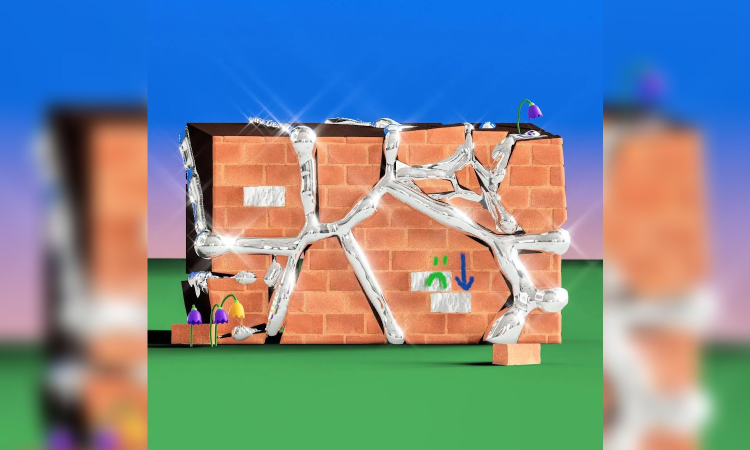Big tech vs big dreck: It’s an AI-driven economy vs the left-behind
Trump’s erratic economic policies are being masked by an AI investment boom. The technology is powering growth and markets—for now—but it’s disguising deep structural weaknesses and policy-induced risks

Since President Trump took office, the economy has followed a pattern. The administration does something outlandish — tariff rates at levels not seen in a century, trying to fire a Federal Reserve governor — and economists, myself included, warn of the deep risks.
So far, though, the economy has kept chugging along. The market did plummet in April over the “Liberation Day” tariffs, but it has since rebounded many times over, rising to new highs 30 times this year. Risky policies that alarm mainstream economists don’t appear to be having much of an effect on the economic indicators we follow.
That’s because something positive is happening in Trump’s economy. It’s just happening in spite of his policies, not because of them.
The economy is being bolstered by a remarkable investment boom in artificial intelligence. A credible estimate suggests that AI capital expenditures may reach 2% of the gross domestic product in 2025, up from most likely less than 0.1% in 2022. To provide some sense of scale, that means the equivalent of about $1,800 per person in America will be invested this year on AI.
Without these investments, economic growth this year may have clocked in at around 1%. Instead, it is likely to land at almost twice that. Just seven large technology companies are responsible for nearly 60% of the gains in the S&P 500 this year.
The coat of AI gloss is giving the administration runway to double down on bad ideas: America’s effective overall tariff rate is nearly back to the levels announced in April, the vice president has called for the administration to be involved in the Federal Reserve’s interest rate decisions and Trump fired the head of the Bureau of Labour Statistics after a disappointing jobs report.
The situation is worse than having all of your economic eggs in one basket. It’s closer to putting all of your eggs in one basket and stomping on all the other baskets.
There are signs that the non-AI economy is under duress. As economists predicted, tariffs are pushing up inflation and dragging down growth. Hiring has stalled. Jobs are particularly hard to come by for young people entering the labour market; youth unemployment is at 10.5%, a level not seen in nearly a decade, absent the pandemic.
These are problems the AI boom is likely to worsen, not ease. The president of the Federal Reserve Bank of Minneapolis, Neel Kashkari, recently pointed out that while it takes a lot of money to build AI data centres, it does not take that many workers to operate them.
It is somewhat illogical to reckon with these two parts of the economy separately. If there were no data centres to build, dollars would flow into other types of investment. It’s possible that other parts of the economy are being held back by AI’s dominance. That’s what happened in the 1990s Internet boom. Smaller manufacturing firms had a hard time getting access to capital that flooded instead into every dot-com company on offer (some more successful than others).
But it seems clear that there are two powerful economic forces pulling in opposite directions. The Trump administration’s trade war and attack on institutions like the Fed serve to make investors wary, businesses uncertain, and the economy weaker. Slowing immigration also has a significant impact. Last year the economy was projected to be 3% larger by 2034 because of now outdated assumptions about an influx of immigrants.
The boon from AI has the potential to outweigh that policy-induced drag. Looking back to the last tech boom is informative. In the early 1990s, labour productivity growth was sluggish, averaging less than 1%. It rose to 3% by the end of the decade, powered by computerisation and the internet revolution. That helped the economy soar and the federal government balance its budget for the first time in recent history. Something similar may be afoot.
Presidents do not control business cycles, nor can they do much to change demographic trends or bring down the cost of groceries. In good times, politicians often get too much credit for their economic wizardry; in bad times, too much blame.
Right now, though, policy choices are getting too little blame. Estimates suggest that tariffs alone will cause the economy to be persistently 0.4% smaller than it would have been, primarily through reduced productivity and investment. The fact that the economy is likely to benefit meaningfully from technological progress does not mean the dials of the economy we can control are unimportant or that their mismanagement will ultimately not be damaging.
If history is any guide, this revolutionary technology will change the world, but not without causing economic chaos. That is the story of the dot-com bubble bursting and of “railway mania” in Britain in the 1800s. In both cases, investors flooded into ultimately unprofitable ventures. Pets.com was able to attract funding. So, too, were multiple competing railway lines between Liverpool and Leeds. Bubbles burst, financial markets collapse, investors count their losses, and people lose their livelihoods.
Large-scale labour force displacement may be upon us. Automation could widen global inequality. A financial crisis could be looming. Private equity-backed insurance companies are funnelling policyholders’ premiums into the energy and infrastructure investments required to power the AI boom, much as banks before the financial crisis funded a mortgage boom they didn’t fully understand.
Or more banally, AI may take time to reach its transformational potential. In 1987, the economist Robert Solow quipped, “You can see the computer age everywhere but in the productivity statistics.” Those gains came, but they took years to materialise.
Markets often have a way of disciplining policymakers. The AI boom, by contrast, is masking real problems. To navigate this moment smoothly requires creating a policy that will expand our economy and make it more resilient. At the very least, we should avoid the misguided Trump administration policies that are weakening it.
@The New York Times



